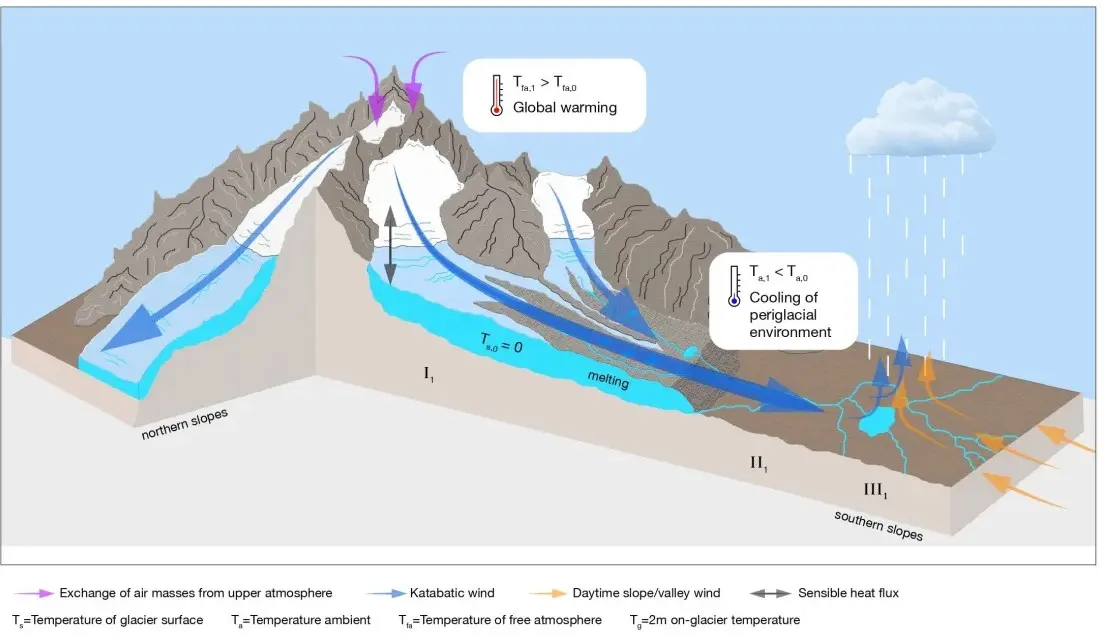In a striking revelation, a recent study published in ‘Nature Geoscience’ on December 4th unveils a remarkable phenomenon in the world’s highest mountain ranges, potentially offering a ray of hope against the escalating climate crisis. Since the 19th century, human and industrial activities have significantly influenced climate change, primarily due to greenhouse gas emissions. These emissions create a blanket-like effect around the Earth, trapping solar heat and escalating global temperatures, leading to the melting of glaciers.

Himalayas (Istock)
Key Findings and Phenomenon Explained:
Francesca Pellicciotti, a leading glaciologist at the Institute of Science and Technology, Austria, and the principal author of the study, illuminates this new phenomenon. As the temperatures rise, a unique reaction occurs in certain high-altitude glacial masses. This reaction triggers strong, cold winds that blow down the slopes, thus cooling the lower regions of the glaciers and adjacent ecosystems.

The warm climate widens the temperature gap between the air above the Himalayan glaciers and the colder air in direct contact with the glacier surfaces. This results in increased turbulent heat exchange on the glacial surface, leading to a more pronounced cooling of the surface air mass.
New #publication in @NatureGeosci! An international team of researchers, co-led by @ISTAustria Prof Francesca Pellicciotti, unravels the mystery of Himalayan #glaciers actively cooling the air in contact with their surfaces. Read more here 🔗 https://t.co/C6JmGDuDVy pic.twitter.com/DbEh1zogIT
— ISTAustria (@ISTAustria) December 4, 2023
The Limitation and Need for More Data:
Despite the promising nature of these cold winds, Thomas Schu, a member of the ISTA research group, cautions that this phenomenon alone is insufficient to counteract the overall effects of global warming and preserve the glaciers completely. The Himalayan cooling is localized and may not be enough to overcome the broader impact of global warming. The study also highlights the general scarcity of high-altitude data, which led the research team to focus on unique ground monitoring records from a single station in the Himalayas.
Global Significance and Future Research Directions:
The study suggests that this glacial cooling process could be globally significant and occur in any glacier worldwide, provided the conditions are met. This insight offers a compelling reason for collecting more long-term, high-altitude data, which is urgently needed to validate these new findings and understand their broader impacts.

Historical Context and Global Warming Trends:
The Earth’s surface temperature is now approximately 1.1 degrees Celsius warmer than in the late 19th century (pre-Industrial Revolution) and warmer than at any point in the last 100,000 years. The past decade (2011-2020) was the warmest on record, with each of the last four decades being warmer than any preceding decade since 1850, as per the United Nations website.

